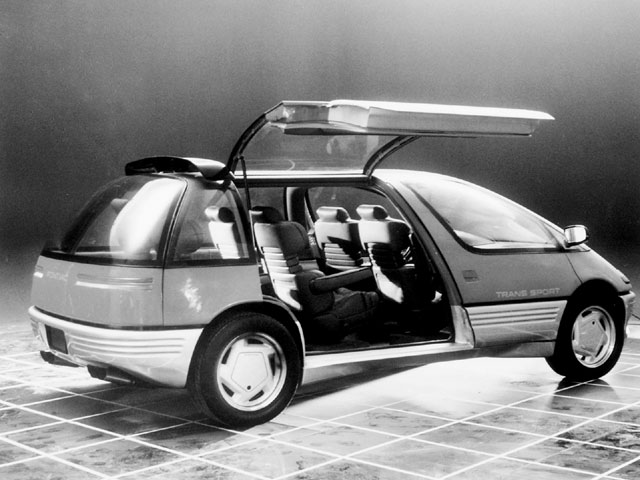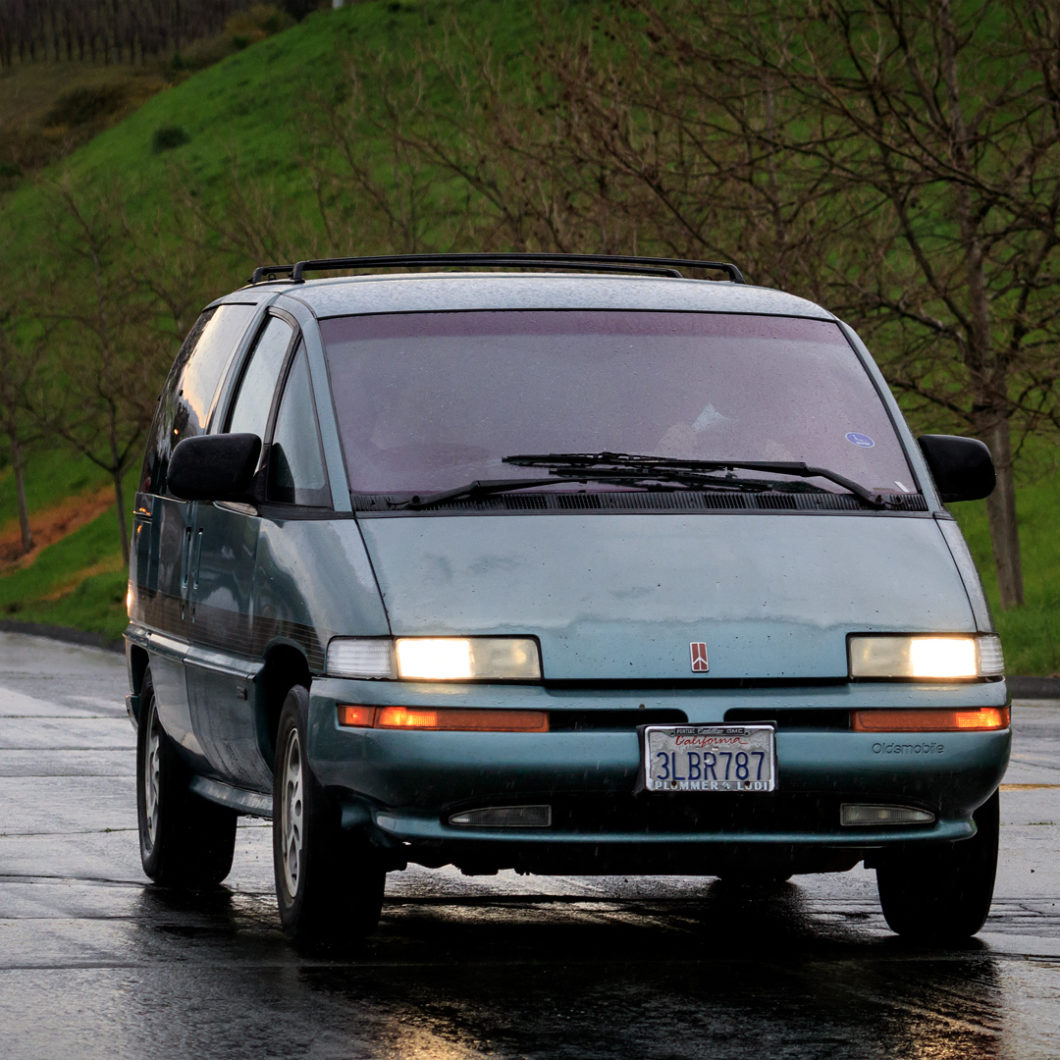GM’s first attempt at minivans, the long-lived 1985 Chevy Astro/GMC Safari, were more “van” than “mini.” This wasn’t so surprising since they were designed in a hurry and therefore based mostly on off-the-shelf truck components.
They were bigger and sturdier than Chrysler’s hot new minivans, but also appealed to different buyers – as much tradespeople as families (indeed, Astro and Safari remained popular work vans long after their appeal as minivans faded).
GM needed a proper minivan to take on Chrysler and about 18 months after the Astro went on sale GM teased a truly radical minivan concept – 1986’s Pontiac Trans Sport.

The slick front-drive concept had gullwing rear doors (like the Tesla X). It had a panoramic glass roof with electronic dimming (like on a Boeing 787). Most minivan-like of all, it had an entertainment system complete with a Nintendo NES and a laptop station. Laptops were clunky in 1986 but at the time couldn’t pry kids away from Nintendo.
All of these future production features were clothed in a taut, lozenge-like aerodynamic shape that looked as quick as Pontiac purported it to be.
Although AMC had exhibited a Renault Espace at shows the year before, the Minivan was still a new concept and nobody had yet built an overtly “sporty” or “stylish” Minivan; nor was the Espace ever sold in North America (Renault was already wavering on its future in the U.S.A.).
The prescient, popular Trans Sport concept was was quickly greenlit for production – but its gestation took three years.
The U-bodies Arrive
Three years later, U-body minivans began rolling off the line at North Tarrytown assembly in summer of 1989. But much was lost in translation, as often happened with GM concepts in that era. The entertainment system, fancy doors, and panoramic roof? All were axed for cost.
Chevy (Lumina APV) and Olds (Silhouette) versions were added to spread unit costs and give those divisions minivans to compete with Chrysler and Ford’s Aerostar.
For production the styling was toned down considerably, a common complaint about 1980s GM concepts that dazzled at the show and they didn’t shine quite so bright in the showroom.
Each division got a lightly adapted version keyed to their brand identity.
The Chevy would be the most plain, the Pontiac the sporty one, and the Olds the luxury model. The U-body minivans were a space frame with plastic exterior panels using lessons learned from the Fiero – which ended cosmetic rust as a problem and made changing the lower styling fairly easy.
Mechanical pieces came in part from the GM-10 front-drive sedans and they were powered at first solely by the Chevy 3.1L V6 (Buick’s 3800 V6 was added in 1992), which ended any sporty pretense at Pontiac but wasn’t a bad setup vis-a-vis the rest of the minivan market.
The styling wasn’t quite the Flight of the Navigator look the concept promised, but they were still were stylish and futuristic – as if they’d wandered off the Star Trek: The Next Generation set (in the mid-2000s, one became internet famous after it was dressed up as a TNG shuttlecraft) – even if their styling was oft-compared to a Dustbuster handvac.
While the look was toned down overall, the one particular detail was not. The huge distance between the windshield and the driver, the lone complaint consumers had about the concept, was reduced for production but still caused consumer resistance.
The far-out vans never sold as well as anticipated in part because the styling was too radical for many tastes, but not “rad” in the same way the concept was. Pontiac and Chevy got a big boost when they revised the front clip into a more conventional looking setup in 1994, but Olds stuck with the original styling through 1996.
Get Shorty
Though modestly popular with families, by 1995 Oldsmobile was selling most Silhouettes to Avis; which led to the Silhouette’s star turn in 1995’s “Get Shorty,” an Elmore Leonard-penned Mob-Hollywood parody starring John Travolta (hot off the success of “Pulp Fiction”) as Chili Palmer, a Miami mafioso sent to L.A. to collect a debt.
Arriving at LAX, Palmer gets stuck with a minivan rental car instead of his preferred Cadillac. A minivan, by 1995 associated with mom and dad the way station wagons used to be, was specifically chosen by the producers as the most unlikely mobster ride the they could think of for a character who was supposed to be a character similar to Silvio Dante from the (much later) Sopranos.
The rental lot attendant wryly tells a nonplussed Palmer “It’s the Cadillac of Minivans,” a line Palmer repeats to people throughout the movie in an odd but effective product placement. It proved surprisingly effective – the tagline is still associated with the Silhouette almost a quarter century later.
The U-bodies were restyled in 1997 and again in 2005, lasting in production (much modified) until 2009. The Silhouette was indeed modestly more popular after “Get Shorty,” though it was never a big seller. Olds tried again with movie association in 1998, paying big bucks to have the then-new Intrigue included in “The X-Files: Fight the Future,” to less success.
This survivor Silhouette is still regularly driven by the grandson of the original owner (see more on instagram: @_auto333).

